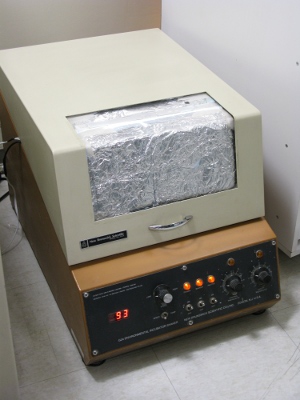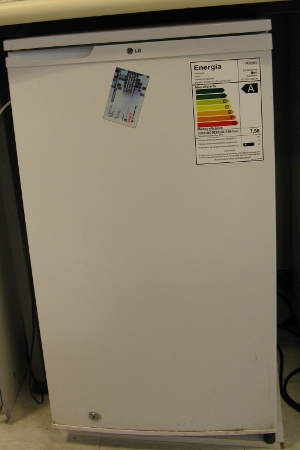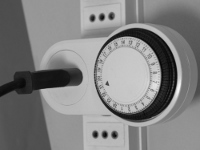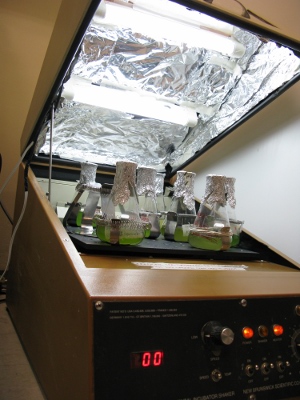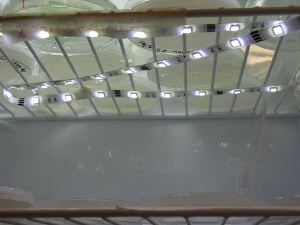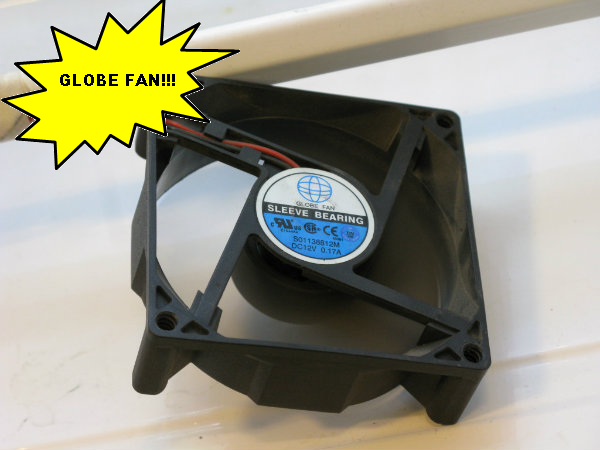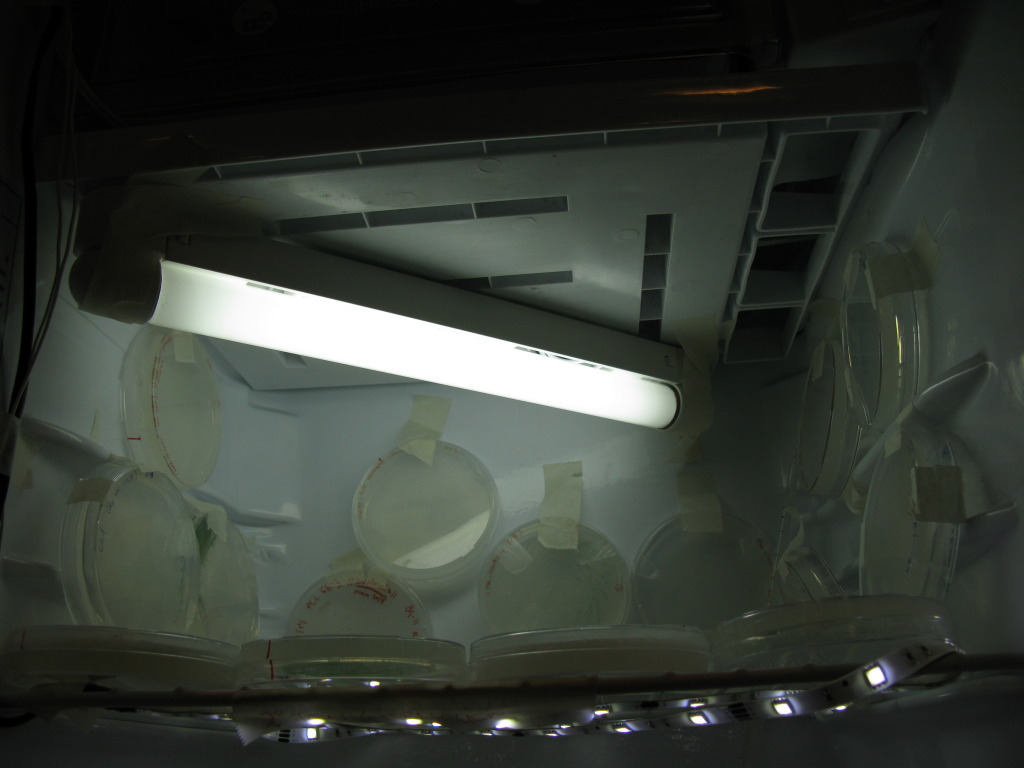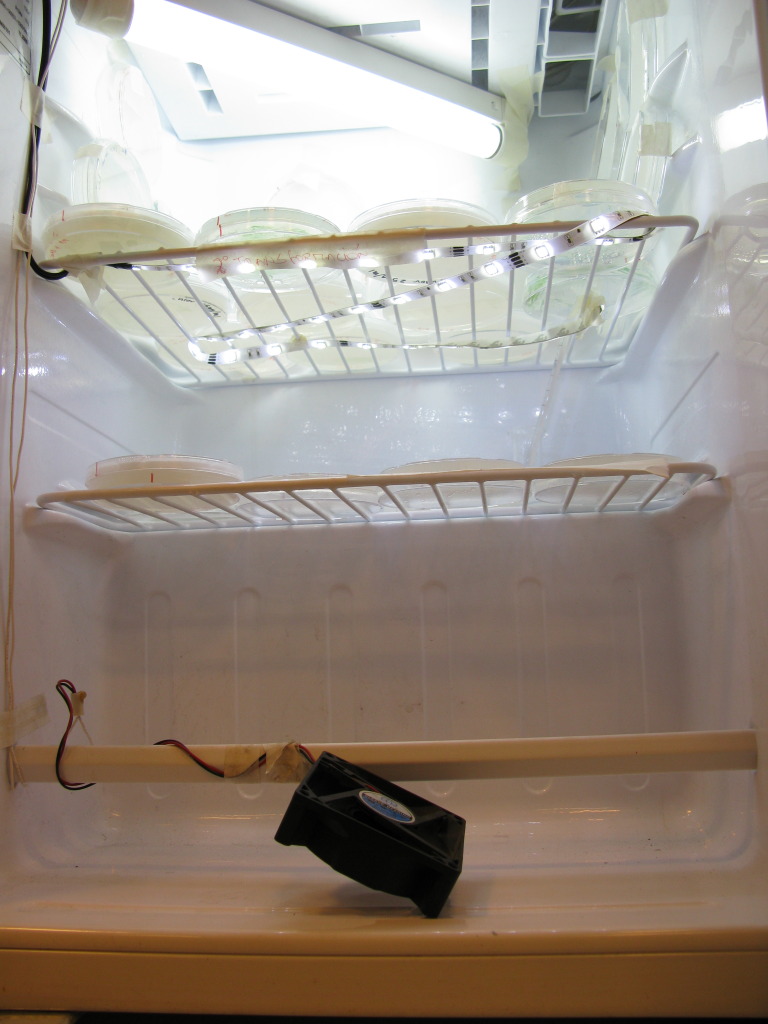Team:UC Chile2/DIY
From 2012.igem.org
(Difference between revisions)
| (27 intermediate revisions not shown) | |||
| Line 6: | Line 6: | ||
<ul> | <ul> | ||
<li>Broken refrigerator or likewise</li> | <li>Broken refrigerator or likewise</li> | ||
| - | <li>Fluorescent Tubes (we used 3)</li> | + | <li>8-10W Fluorescent Tubes (we used 3)</li> |
| - | <li> | + | <li>12V 1 meter LED strip</li> |
<li>Fan (we used a 12V fan from a broken-down computer power-supply)</li> | <li>Fan (we used a 12V fan from a broken-down computer power-supply)</li> | ||
<li>A 220V -> 12V power adapter</li> | <li>A 220V -> 12V power adapter</li> | ||
| Line 16: | Line 16: | ||
<h2>Container</h2> | <h2>Container</h2> | ||
| - | [[File:oldshaker.jpg| | + | [[File:oldshaker.jpg|150px|left]] |
| - | [[File:brokenfridge.jpg| | + | [[File:brokenfridge.jpg|150px|right]] |
<p>First of all, you need a closed space to build your incubator. We have adapted two different spaces for growing cyanobacteria. Look around in your lab for some kind of closed spaces to adapt. We were lucky to find a very old shaker that had not been used for ages and a small broken refrigerator (about 40 Liters) that was lying around the lab. That's your starting point for your DIY Cyanobacterial incubator.</p> | <p>First of all, you need a closed space to build your incubator. We have adapted two different spaces for growing cyanobacteria. Look around in your lab for some kind of closed spaces to adapt. We were lucky to find a very old shaker that had not been used for ages and a small broken refrigerator (about 40 Liters) that was lying around the lab. That's your starting point for your DIY Cyanobacterial incubator.</p> | ||
| Line 24: | Line 24: | ||
<br /> | <br /> | ||
<br /> | <br /> | ||
| + | <br /> | ||
| + | <br /> | ||
| + | <br /> | ||
| + | <br /> | ||
| + | |||
| + | <h2>Wiring</h2> | ||
| + | [[File:switch.jpg|150px|left]] | ||
| + | [[File:timerforcyano.jpg|150px|right]] | ||
| + | <p>It is recommended that you use independent electrical wiring for each fluorescent tube so that if you have excess lighting you may switch of an individual fluorescent tube. You have to connect the fluorescent tube to a 2-3 meter electrical wire, including a switch and a plug. Use pliers to make the connections and remember to connect the fluorescent tubes after insulating every connection to avoid short-circuits. | ||
| + | <br> | ||
| + | Also remember that LEDs have polarity so they will not light up unless connected correctly. Same applies to the 12V fan.</p> | ||
| + | |||
<br /> | <br /> | ||
<br /> | <br /> | ||
| Line 30: | Line 42: | ||
<h2>Illumination</h2> | <h2>Illumination</h2> | ||
| + | [[File:coolshaker.jpg|300px|right]] | ||
| + | |||
<p>Cyanobacteria need light to do photosynthesis. You need to equip your incubator with artificial lighting to reach sufficient μE/m²/sec for your cyanobacteria to grow happily (the ammount of μE/m²/sec depends on your particular system and you'll have to search for your adecuate conditions. It may be important to sustain cyclic illumination to mime day/night cycles as to maintain circadian rhythmns so here is where the electrical timer comes into play. You can regulate it to any kind of day/night cycle you need for your bugs (16/8, 12/12, etc...). You can also leave them in continuous lighting which may speed up growth, but you'll lose circadian behaviour of genes after some days...<br> | <p>Cyanobacteria need light to do photosynthesis. You need to equip your incubator with artificial lighting to reach sufficient μE/m²/sec for your cyanobacteria to grow happily (the ammount of μE/m²/sec depends on your particular system and you'll have to search for your adecuate conditions. It may be important to sustain cyclic illumination to mime day/night cycles as to maintain circadian rhythmns so here is where the electrical timer comes into play. You can regulate it to any kind of day/night cycle you need for your bugs (16/8, 12/12, etc...). You can also leave them in continuous lighting which may speed up growth, but you'll lose circadian behaviour of genes after some days...<br> | ||
We set our top fridge shelf at 40 μE/m2/sec, our bottom shelf at 20 μE/m2/sec and the rotating shaker at 40 μE/m2/sec on average (we have slight variations according to the position in the incubator, +/- 5 μE/m2/sec). To have a accurate measurement of the ammount of μE/m2/sec we used a hand-held Luminometer</p> | We set our top fridge shelf at 40 μE/m2/sec, our bottom shelf at 20 μE/m2/sec and the rotating shaker at 40 μE/m2/sec on average (we have slight variations according to the position in the incubator, +/- 5 μE/m2/sec). To have a accurate measurement of the ammount of μE/m2/sec we used a hand-held Luminometer</p> | ||
| + | [[File:Lightinfridge.jpg|300px|left]] | ||
| - | + | <br /> | |
| + | <br /> | ||
| + | <br /> | ||
| + | <br /> | ||
| + | <br /> | ||
| + | <br /> | ||
| + | <br /> | ||
| + | <br /> | ||
| + | <br /> | ||
| + | <br /> | ||
| + | <br /> | ||
| + | <br /> | ||
| - | < | + | <h2>Temperature control</h2> |
| + | [[File:incubator4_uc_chile.jpg|250px|left]] | ||
| + | <p>The old shaker we are using still has its heating system and thermostat working so we only had to set the temperature with a thermometer until we obtained 30°C (the thermostat works but not with the standard temperature setting stated by the machine.<br> | ||
| - | + | The fridge was another story. When we installed the fluorescent tubes, we could obtain 30 +/- 1 °C steadily, but then we installed the LEDs and the temperature rose up to 37°C (we believe that we killed lots of our Synechocystis while setting the temperature...). Then we stripped the rubber band(what's the word for vacuum-producing hermetically-sealing thingy of the fridge that is located between the fridge door and casket?) and installed a fan in the bottom part of the fridge to circulate cool air from the bottom part of the fridge with the hot air that rises (to where our cyanos are currently living). We were very lucky as the temperature exchange from inside the fridge with the heat produced by the lights and the temperature of the laboratory (25°C) keeps the incubator running smoothly at 30°C. | |
| - | < | + | <br><br> |
| - | < | + | If you are not as lucky as us, we thought about using thermoheaters (such as the ones used to heat up fish aquariums which also have thermostats incorporated). If you have success with them please let us know!</p> |
| + | [[File:incubator5_uc_chile.jpg|250px|right]] | ||
| + | <br /> | ||
| + | <br /> | ||
| + | <br /> | ||
| + | <br /><br /> | ||
| + | <br /> | ||
| + | <br /> | ||
| + | <br /> | ||
| + | <br /> | ||
| + | <br /> | ||
| + | <br /> | ||
| - | < | + | <h2>Increasing space...</h2> |
| + | <p>A couple of days after the premiere of our incubator, we fell short of space for transformation plates... Soon we had a great idea; why not use vertical space for setting them? We only have to be careful of removing condensation every couple of days and now we have quadruple more space to put the plates on!</p> | ||
| + | [[File:Incubator2_uc_chile.jpg|300px|left]] | ||
| + | [[File:Incubator3_uc_chile.jpg|300px|right]] | ||
| - | </ | + | <br /><br /> |
| + | <br /> | ||
| + | <br /> | ||
| + | <br /> | ||
| + | <br /> | ||
| + | <br /> | ||
| + | <br /> | ||
| + | <br /> | ||
| + | <br /> | ||
| + | <br /> | ||
| + | <br /> | ||
| - | < | + | <p style="text-align: center;">So now we present our Cyanobacterial Incubator Deluxe.... ta-da!:</p><br><br> |
| - | [[File: | + | [[File:Incubator1_uc_chile.jpg|300px|center]] |
| + | <h2>Special Features</h2> | ||
| + | And it sure does look cozy inside. It's warm and has a lovely humming sound from the fan... [[Media:Hum.mp3|Check it out!]] | ||
| - | |||
| - | |||
| - | |||
| - | |||
| - | |||
| - | |||
| - | |||
| - | |||
| - | |||
| - | |||
| - | |||
| - | |||
| - | |||
| - | |||
[[File:Incubator7_uc_chile.jpg|400px]] | [[File:Incubator7_uc_chile.jpg|400px]] | ||
| - | |||
| - | |||
{{UC_Chilefooter}} | {{UC_Chilefooter}} | ||
Latest revision as of 08:03, 25 September 2012
 "
"

